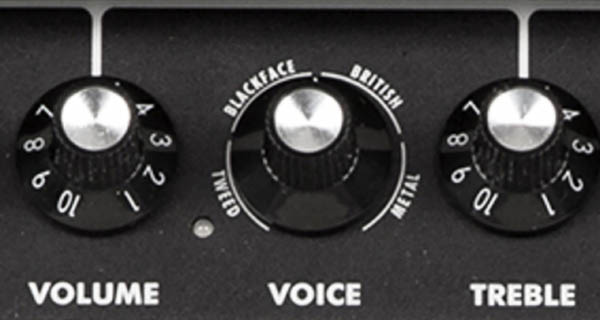Fender Champion 40 Vs 100 [Difference & Which is better]
Fender is one of the most reputable brands in the industry, and their Champion series amplifiers are well-known for their versatility, quality, and affordability. Two of the most popular models in this series are the Fender Champion 40 vs 100. The question that often arises is what is the difference between them & which one performs better?
We will be exploring the similarities, differences, and performance of these two amps & assist you in deciding which one is the best match for you. We’ll take a deep dive into the features of both amps, including their power, tone, effects, build quality & more, to provide you with a comprehensive comparison.

We understand that choosing the right amplifier can have a significant impact on your playing experience. We are here to help you make an informed decision.
# Table of Contents =>
- 1 Main Difference Between The Fender Champion 40 Vs 100:
- 1.1 a) Amplifier Power and Speaker Size Differences:
- 1.2 b) Tone Capability Comparison:
- 1.3 c) Headphone Outputs & Auxiliary Inputs:
- 1.4 d) Control Knob Differences:
- 1.5 e) Channel Switching Option:
- 1.6 f) Reverb Effects:
- 1.7 g) Footswitch Inputs:
- 1.8 h) Pros and Cons of Both Amps:
- 1.9 i) Price Range:
- 1.10 FAQs –
Overview of the Fender Champion 40 and Fender Champion 100:
The Fender Champion 40 and Fender Champion 100 are two popular guitar amplifiers from the renowned brand Fender. These amplifiers are designed to cater to the needs of guitarists of all levels & feature modern features while still retaining the classic Fender sound.
While both the Fender Champion 40 and Fender Champion 100 are highly rated among musicians. There are key differences between the two that need to be considered when deciding which one to choose. These differences include factors such as sound quality, tone, speaker size, durability & weight.
Main Difference Between The Fender Champion 40 Vs 100:
a) Amplifier Power and Speaker Size Differences:

One of the key differences to consider is the amplifier power and speaker size. The Champion 100 boasts a more powerful 100-watt output, while the Champion 40 has a 40-watt output. The larger amplifier power provides a more robust sound that can fill larger rooms or venues. However, this difference also depends on the size, acoustics & distance from the speakers and the listener.
The Champion 100 features two 12-inch speakers while the Champion 40 has one 12-inch speaker. The speaker size affects sound quality, tone & projection. The larger the speaker size, the more air it can move, which can result in a more natural and balanced tone. However, larger speakers can also add weight to the amp, making it less portable.
b) Tone Capability Comparison:
One of the most important factors to consider is the tone capability of each amplifier. The Champion 100 has a larger speaker size of 12 inches compared to the 40’s 10 inches, which can have a significant impact on sound quality and tone. The greater speaker size generates more bottom-end depth & a fuller overall sound than the Champion 40.
The Champion 100 features a second channel that allows for greater customization of tone. This feature allows users to create a more complex tone with deeper levels of bass, mid-range & treble.
c) Headphone Outputs & Auxiliary Inputs:

One crucial aspect to compare is their headphone outputs & auxiliary inputs. Both amps have headphone outputs and auxiliary inputs, which allow for silent practice & jamming with external music sources. The Fender Champion 100 offers more flexibility with two separate auxiliary inputs and a headphone output with a built-in speaker emulator, allowing players to emulate various speaker sizes and environments.
The Fender Champion 100’s headphone output boasts a higher quality sound, with improved clarity and depth compared to the Fender Champion 40. While headphone outputs and auxiliary inputs may not be the most significant factors when comparing amps.
They can still play a vital role in determining overall sound quality, tone, speaker size, durability, weight & ultimately, the overall performance of the acoustic or electric guitar.
d) Control Knob Differences:

One of the most noticeable differences between the Fender Champion 40 and 100 is the control knob layout. The Champion 40 has a more simplified set of controls, with only two channels and basic tone-shaping controls. While the Champion 100 offers a wider range of tonal versatility with four channels & more advanced tone controls.
The Champion 100 also has a built-in effects loop, which allows for adding external effects pedals to the signal chain, adding even more tonal flexibility to the amp. The control knob differences between these amps play a significant role in the sound quality & tone of the amplifier, as the more advanced controls on the Champion 100 allows for greater control over the output sound.
e) Channel Switching Option:
Both the Champion 40 and Champion 100 offer this feature, which allows for a quick & seamless transition between tones without having to manually adjust settings. This comes in handy for guitarists who need to switch between different effects or playing styles during a performance or recording session.
The ability to switch channels can greatly enhance the sound quality and tone of the amplifier. Making it a standout feature when comparing the Champion 40 vs 100. It is also important to note that channel switching can affect the speaker size & overall weight of the amplifier.
f) Reverb Effects:

Reverb effects can have a significant impact on the sound quality and tone of your guitar. These effects use an artificial space to alter the sound of the instrument, adding depth and character to your playing. Fender Champion 40 and 100 amplifiers come with built-in reverb effects, providing players with a variety of sounds to choose from.
The difference in the reverb effects between these two models is minimal, as both offer high-quality digital reverb effects that function seamlessly with their respective speaker sizes. The durability of the reverb effects is similar in both models, with both offering solid-state construction for a long lifespan.
g) Footswitch Inputs:
One of the differences between them is that the Champion 100 offers nine footswitch inputs while the Champion 40 has just two. Footswitches serve as a convenient way to switch between different sounds and effects while playing. With nine footswitch inputs available on the Champion 100, the player has greater flexibility & control over their sound quality.
It is important to note that footswitch inputs do not necessarily affect the tone, speaker size, durability, weight, or other factors that contribute to the overall performance of the amp. Therefore, while the Champion 100’s multiple footswitch inputs may be an advantage for some players. It may not necessarily make it the better performer overall.
h) Pros and Cons of Both Amps:
Here we will outline the pros and cons of each to help you make an informed decision based on your needs.
- Firstly, in terms of sound quality, both amps provide clear, dynamic tones with good depth and resonance.
- Secondly, when comparing tone, the Champion 100 has a more robust sound due to its higher wattage and larger speaker. While the Champion 40 is more suitable for home practice or small gigs.
- Thirdly, the Champion 100’s larger size and increased power make it more durable and able to handle heavy usage.
- Fourthly, the Champion 40 is lighter and easier to transport than the 100, which makes it more appropriate for musicians who need portability.
Both amps have their own strengths, and which is better for you will depend on your unique needs.
i) Price Range:
The most important considerations is the price range comparison. The Fender Champion 40 falls into the mid-range category, with a price point that is lower than the Fender Champion 100. However, this does not mean that the Fender Champion 40 lacks in performance.
In fact, it offers comparable sound quality, tone & speaker size to that of the Champion 100, while also being more lightweight which makes it highly portable. The Fender Champion 100 is a higher-end option with added durability, making it the perfect choice for heavy-duty performance.
The Fender Champion 40 vs 100 are both impressive guitar amplifiers that cater to different needs & playing styles. The Champion 40 is a great fit for home practice and small gigs, while the Champion 100 is more suitable for large gigs and performances. When it comes to sound quality, performance & advanced features, the Champion 100 is a clear winner. But it also comes with a higher price tag.
FAQs –
Question 1: Is Fender Champion 100 loud enough to gig with?
Answer: Yes, the Fender Champion 100 is loud enough to gig with. It has 100 watts of power and can easily fill a medium-sized venue with sound. The actual volume needed for a gig depends on the specific venue and performance situation. So it’s always a good idea to test the amp in different settings before a gig.
Question 2: Is the Fender Champion 100 discontinued?
Answer: As of August 2021, there is no official announcement from Fender that the Champion 100 has been discontinued. It is possible that certain retailers or distributors may no longer carry the product. It is recommended to check with authorized Fender dealers for availability.
Question 3: Is the Fender Champion 40 loud enough for gigs?
Answer: It depends on the type of gig and the size of the venue. The Fender Champion 40 can definitely be loud enough for smaller gigs and venues, but may not be powerful enough for larger gigs or outdoor performances.
Question 4: Is Fender Champion 40 good for acoustic guitar?
Answer: While the Fender Champion 40 is primarily designed for electric guitar, it is capable of producing a warm and natural tone that can work well with an acoustic-electric guitar. If you are looking for an amplifier that is specifically designed for acoustic guitars.
Last Updated on July 9, 2023 by Perry Garner



I have a Fender Champion 40, I am a terrible guitar player (Beginner), Can you hook-up a Distoration Pedal (Boss) into this Amp??? Can you go from Guitar to Distoration Pedal to Amp to get a bigger Crunch sound??? And if later??? can you put another pedal in line with the distoration Pedal, Tuner Etc. Etc. Would vry much like to hear your advice/imput….
Thanks, Wesley James for your Comment,
If you have a Fender Champion 40 and you’re a beginner looking to enhance your sound, adding a distortion pedal like the Boss DS-1 can be a great idea. You can connect the pedal by running your guitar into the input of the distortion pedal and then connecting the pedal’s output to the input of your amp. This setup allows you to engage the distortion pedal and achieve a crunchier, more distorted tone when desired.
Furthermore, as you progress and explore more sounds, you can certainly expand your pedalboard. For example, adding a tuner pedal in line after the distortion pedal can help you keep your guitar in tune effortlessly during performances or practice sessions. Experimenting with different pedal combinations will allow you to discover and shape your unique sound as you continue to develop your skills as a guitarist.